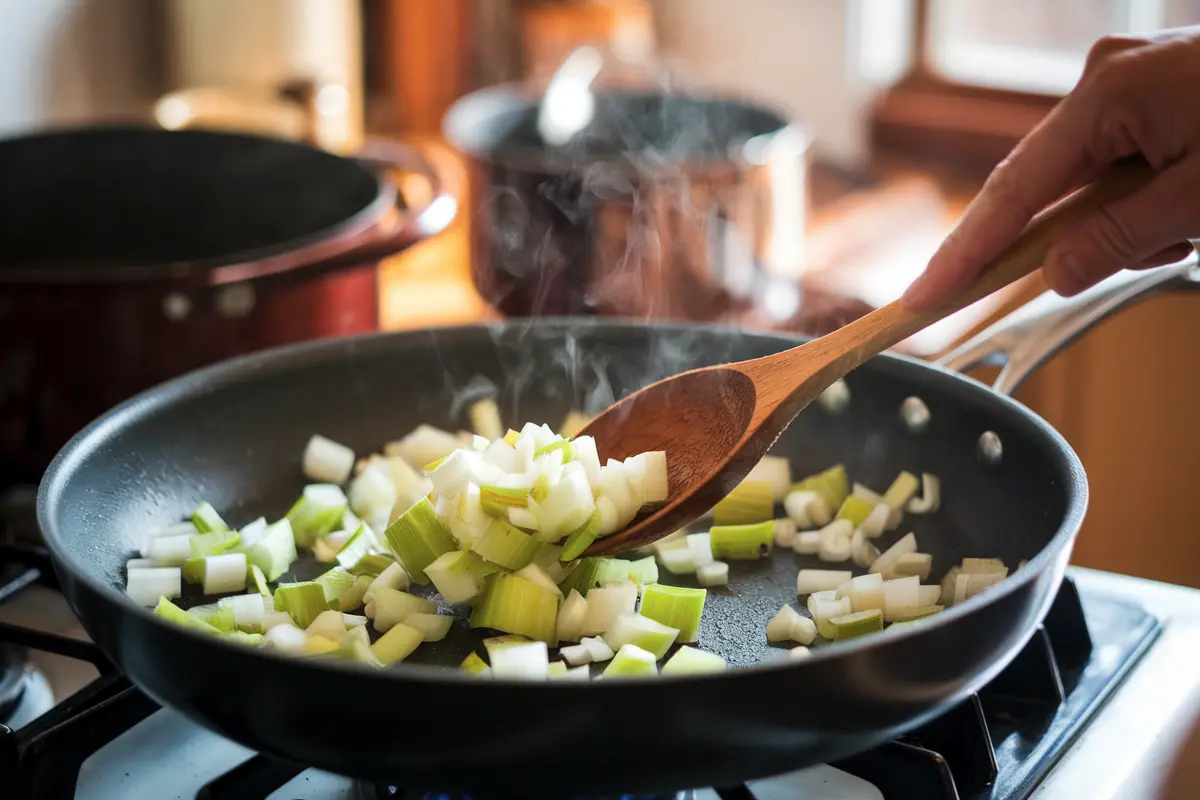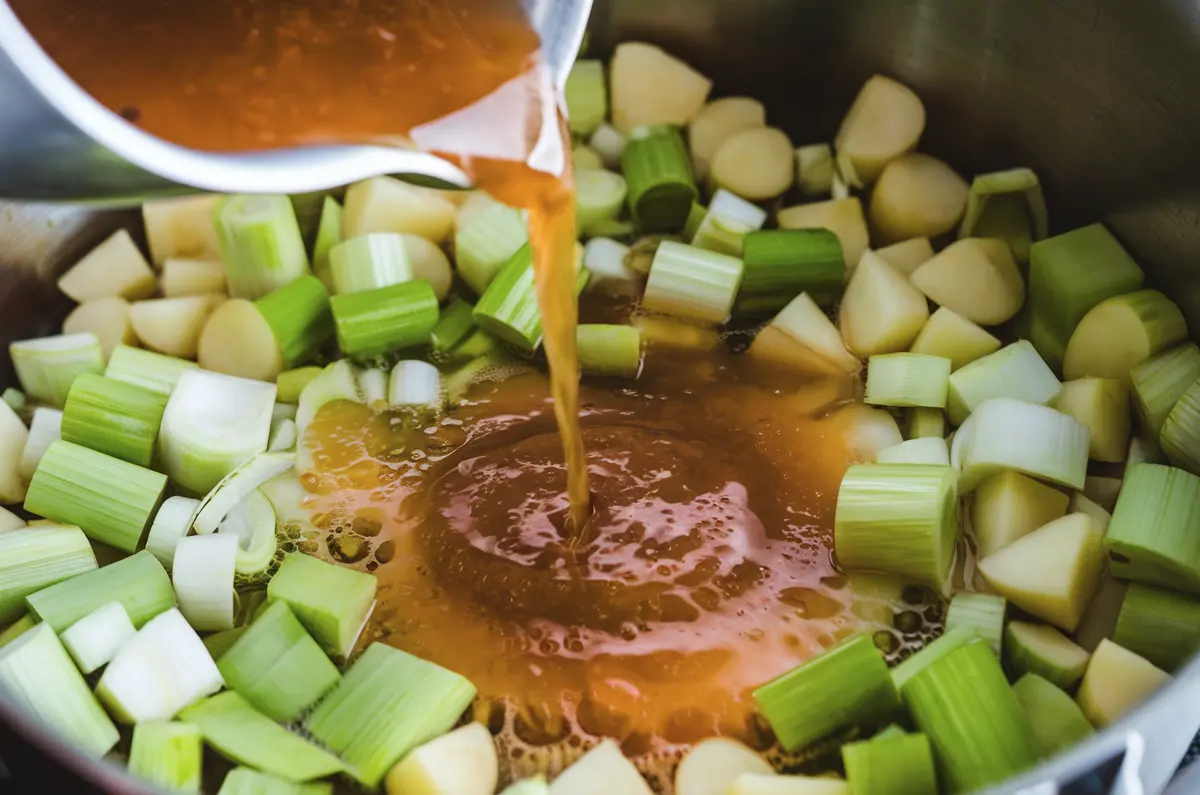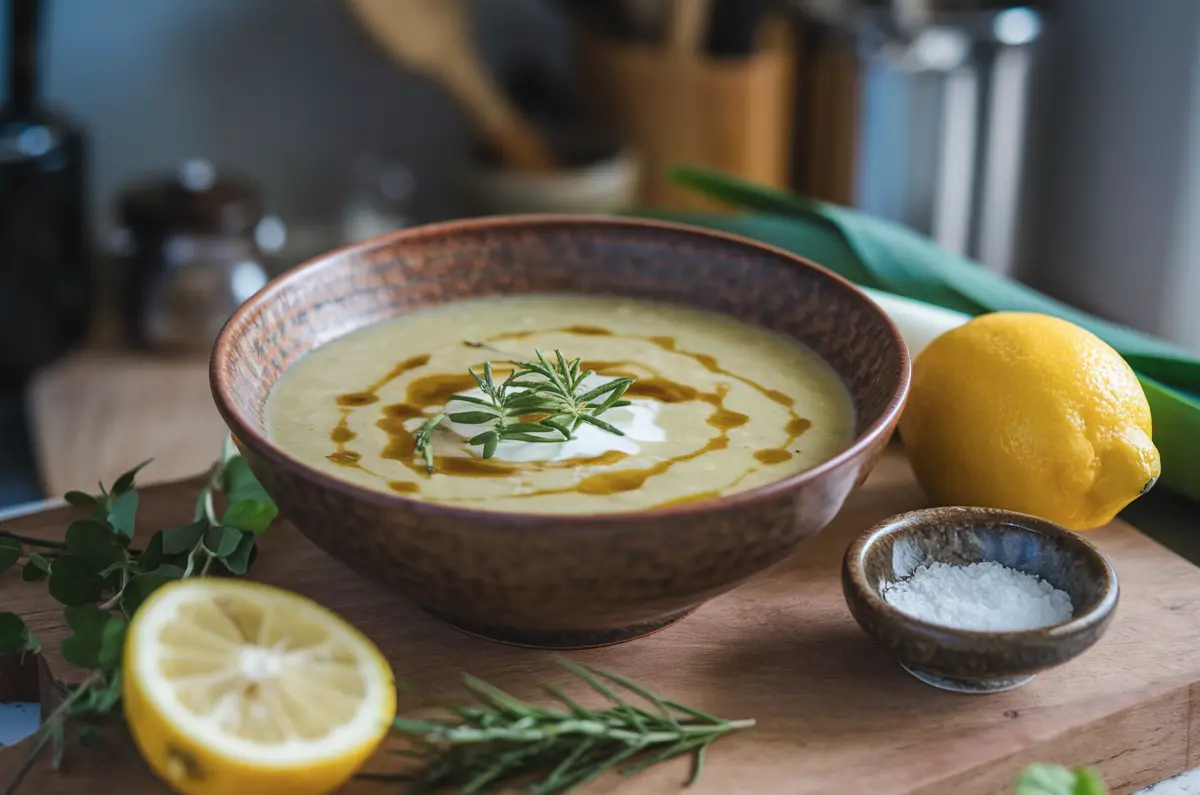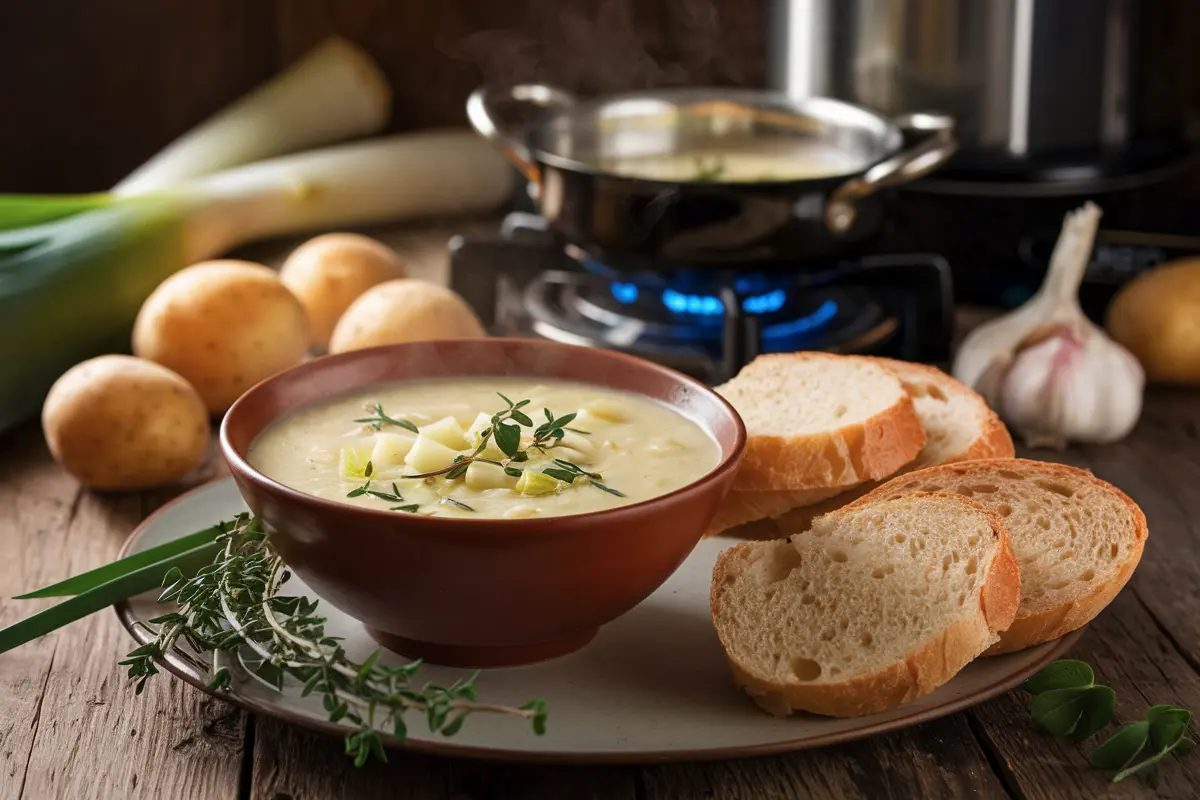Why Does My Leek and Potato Soup Taste Bland? Comprehensive Solutions and Flavor Enhancements
Leek and potato soup is a classic dish that embodies simplicity and comfort. However, there are few things more disappointing than putting effort into this seemingly straightforward recipe, only to end up with a soup that tastes bland. If you’ve ever wondered why your leek and potato soup lacks flavor, you’re not alone. Many home cooks face this issue, and the good news is that there are plenty of solutions to turn your bland soup into a rich and flavorful dish.
In this article, we’ll explore the common causes of bland leek and potato soup, provide actionable tips to enhance the flavor, and discuss how you can prevent this issue in future cooking endeavors.
Understanding the Common Causes of Bland Leek and Potato Soup
Before diving into the solutions, it’s essential to understand why your soup might taste bland in the first place. There are several factors at play, and often, it’s a combination of issues that leads to a lackluster flavor.
1. Insufficient Seasoning
Seasoning is the backbone of any flavorful dish. One of the most common reasons leek and potato soup tastes bland is due to a lack of proper seasoning, particularly salt. Potatoes, being starchy vegetables, require a good amount of salt to bring out their natural flavors. Without enough salt, even the freshest ingredients can taste dull and lifeless.
2. Using a Weak or Bland Broth
The broth serves as the foundation of your soup. If you’re using water or a low-quality, flavorless broth, your soup is bound to taste bland. Broths made from vegetables, chicken, or beef add depth and richness, making the soup more complex and enjoyable.
3. Under-sautéing Aromatic Vegetables
Aromatics such as onions, garlic, and celery play a crucial role in building the base flavor of your soup. If these vegetables aren’t sautéed properly before adding the liquids, they won’t release their full flavors into the soup, resulting in a flat taste.
4. Overcrowding the Pot
When the pot is overcrowded, the ingredients don’t cook evenly. This can prevent the flavors from developing fully, leading to a soup that tastes more like water than the sum of its parts.
5. Lack of Fresh Herbs and Spices
Herbs and spices are essential for adding layers of flavor to your soup. A lack of these elements can result in a one-dimensional taste that doesn’t excite the palate.
6. Absence of Acidity
Acidic ingredients like lemon juice, vinegar, or white wine can brighten and balance the flavors in your soup. Without them, the soup might taste too heavy or rich, lacking the contrast needed to make the flavors pop.
7. Over or Under-Cooking the Potatoes
The texture and flavor of potatoes are heavily dependent on how they’re cooked. Undercooked potatoes will be hard and flavorless, while overcooked potatoes can become mushy and lose their distinct taste, contributing to a bland soup.
8. Using Low-Quality Ingredients
The quality of your ingredients directly impacts the flavor of your soup. Fresh, high-quality leeks, potatoes, and broth are crucial for creating a soup that is rich and flavorful. Using subpar ingredients can lead to a bland result.
Practical Tips to Enhance the Flavor of Your Leek and Potato Soup

Now that we’ve identified the potential culprits behind bland leek and potato soup, let’s explore how you can fix these issues and enhance the flavor of your dish.
1. Boosting the Base with Aromatics
One of the simplest ways to add flavor to your soup is by starting with a strong base of sautéed aromatics. Onions, garlic, and celery should be cooked until they’re soft and translucent, releasing their flavors into the oil before any liquids are added. This step is crucial for building a depth of flavor that will carry through the entire dish.
Sautéing Techniques for Maximum Flavor
- Use a combination of butter and oil: Butter adds richness, while oil helps prevent the butter from burning.
- Cook on medium heat: This allows the aromatics to soften and release their flavors without browning too quickly.
- Season at this stage: Adding a pinch of salt while sautéing helps draw out the moisture from the vegetables and enhances their flavor.
2. Selecting a Flavorful Broth
The choice of broth can make or break your leek and potato soup. While water is often used in traditional recipes, using a well-flavored vegetable or chicken broth can significantly enhance the taste. If you’re using store-bought broth, opt for one with a rich flavor profile, or consider boosting it with a bouillon cube or a spoonful of miso paste for added umami.
Making Homemade Broth for Superior Flavor
- Vegetable Broth: Use a mix of carrots, onions, celery, and garlic, along with herbs like thyme and bay leaves. Simmer for an hour to extract the flavors.
- Chicken Broth: Roast chicken bones with vegetables before simmering them in water to create a rich and hearty broth.
3. Incorporating Fresh Herbs and Spices
Herbs and spices are essential for adding complexity and depth to your soup. Thyme, rosemary, and bay leaves are classic choices that complement the flavors of leeks and potatoes. Additionally, a pinch of nutmeg or white pepper can add a subtle warmth to the soup.
When to Add Herbs and Spices
- Early Addition: Add hardy herbs like thyme and bay leaves early in the cooking process to allow their flavors to infuse the soup.
- Late Addition: Fresh herbs like parsley or chives should be added at the end of cooking to retain their vibrant flavor and color.
4. Enhancing with Dairy
Adding dairy can significantly improve the richness and texture of your leek and potato soup. Heavy cream, sour cream, or even a dollop of Greek yogurt can add a luxurious mouthfeel and mellow out any harsh flavors.
How to Incorporate Dairy Without Curdling
- Temper the dairy: Warm the dairy slightly before adding it to the soup to prevent curdling.
- Add at the end: Stir in the dairy just before serving to maintain a smooth and creamy texture.
5. Balancing Flavors with Acidity
A splash of acid can brighten the flavors in your soup and balance out the richness. Lemon juice, white wine, or a dash of vinegar can lift the entire dish, making it more dynamic and interesting.
Acidic Additions to Consider
- Lemon Juice: Adds a fresh, citrusy brightness that complements the earthy flavors of potatoes.
- White Wine: Adds depth and a subtle sweetness, especially when cooked down slightly.
- Vinegar: A small amount of white wine or apple cider vinegar can cut through the richness and add a slight tang.
6. Creating a Creamy Texture

The texture of leek and potato soup is just as important as the flavor. A smooth, creamy soup feels more luxurious and satisfying. Blending part or all of the soup can help achieve this.
Blending Tips for Perfect Texture
- Use an immersion blender: This allows you to blend the soup directly in the pot, giving you control over the final texture.
- Blend in batches: If using a traditional blender, blend the soup in small batches to avoid overfilling the blender and causing spills.
- Strain if necessary: For an ultra-smooth soup, strain it through a fine-mesh sieve after blending.
7. Adding Umami-Rich Ingredients
Umami, the fifth taste, can add depth and richness to your soup. Ingredients like soy sauce, miso paste, or Worcestershire sauce can provide that savory quality that elevates the entire dish.
Umami Ingredients to Try
- Soy Sauce: Adds a deep, salty richness, especially in vegetable-based soups.
- Miso Paste: Adds a savory, fermented flavor that pairs well with the creaminess of potato soup.
- Worcestershire Sauce: A small splash can enhance the savory notes without overpowering the other flavors.
8. Thickening the Soup
If your soup is too thin, it can taste watered down and bland. Thickening the soup not only improves the texture but also concentrates the flavors.
Thickening Agents to Use
- Potato Starch: Adding a slurry of potato starch and water can thicken the soup without altering its flavor.
- Cornstarch: Similar to potato starch, cornstarch is a neutral thickener that can be added at the end of cooking.
- Roux: A mixture of flour and fat (such as butter), cooked together before adding to the soup, can add both thickness and a subtle toasty flavor.
Preventing Bland Soup: Best Practices for Future Success
Now that you know how to fix bland soup, let’s discuss some strategies to prevent this issue from occurring in the first place.
1. Start with High-Quality Ingredients
The quality of your ingredients is the foundation of any dish. Choose fresh, high-quality leeks, potatoes, and broth for the best results. Fresh herbs and spices also make a significant difference in flavor.
2. Season as You Go
Don’t wait until the end to season your soup. Seasoning in layers, starting with the aromatics and continuing throughout thecooking process, ensures that each component of the soup is well-flavored. Tasting as you go allows you to adjust the seasoning to your preference, ensuring the final dish is perfectly balanced.
3. Don’t Rush the Cooking Process
Cooking soup is a process that requires patience. Allowing the soup to simmer slowly ensures that the flavors have time to develop and meld together. Rushing the process can result in undercooked vegetables and a soup that hasn’t had time to reach its full potential.
4. Use the Right Pot
Using a large enough pot to accommodate all your ingredients comfortably is crucial. Overcrowding the pot can prevent even cooking and hinder the development of flavor. A wide, heavy-bottomed pot is ideal for making soup as it distributes heat evenly and allows for proper evaporation.
5. Layer Your Flavors
Building layers of flavor is key to creating a rich and complex soup. Start with aromatics, add your vegetables, and then your broth. Each addition should be given time to cook and develop its flavor before the next is added.
6. Consider the Role of Dairy
If you’re adding dairy to your soup, do so at the end of the cooking process. This prevents curdling and ensures a smooth, creamy texture. Dairy products like cream or sour cream not only add richness but can also help to balance out strong flavors.
7. Finish with Fresh Herbs and a Splash of Acid
To give your soup a fresh, vibrant finish, add fresh herbs and a splash of acid just before serving. This adds a burst of flavor and brightness that can take your soup from good to great.
8. Blend for Texture
If you prefer a creamy soup, blending part or all of the soup can create a luxurious texture. For an even smoother finish, strain the soup after blending. This step is particularly effective if your soup contains fibrous vegetables like leeks.
9. Adjust the Consistency
The consistency of your soup is just as important as its flavor. If your soup is too thin, reduce it by simmering it uncovered to allow excess liquid to evaporate. If it’s too thick, thin it out with a bit of broth or water until you reach your desired consistency.
10. Garnish for Extra Flavor
Garnishes can add both flavor and visual appeal to your soup. Consider topping your leek and potato soup with a drizzle of olive oil, a sprinkle of fresh herbs, or a handful of croutons for added texture.

Conclusion:
Creating a flavorful leek and potato soup requires attention to detail and a willingness to experiment with different techniques and ingredients. By understanding the common causes of blandness and applying the solutions discussed, you can consistently produce a soup that is rich, satisfying, and packed with flavor.
For those interested in expanding their leek-based recipes beyond just soup, consider trying a Leek and Beef Soup, which combines the subtle sweetness of leeks with the robust flavors of beef. Additionally, learning Which Part of the Leek Is Best for Soup can further enhance your cooking, ensuring that you’re using the most flavorful portions of the vegetable. And don’t forget to properly prepare your ingredients by following this guide on How to Clean and Cut Leeks for Soup to ensure that your soup is free of any grit and full of pure, leeky goodness.
By incorporating these tips and expanding your repertoire, you’ll not only perfect your leek and potato soup but also open the door to a variety of delicious and satisfying dishes. Happy cooking!
FAQs
1. Why does my leek and potato soup taste bland even after adding salt?
Salt enhances flavors, but if your soup is still bland, it could be due to using a weak broth, undercooking the aromatics, or lacking other seasonings like herbs and spices. Consider adding more umami-rich ingredients or a splash of acid to balance the flavors.
2. How can I make my soup thicker without adding cream?
You can thicken your soup by blending part of it, adding a potato starch or cornstarch slurry, or using a roux made from flour and butter. These methods add body without altering the flavor.
3. Can I use milk instead of cream in my leek and potato soup?
Yes, you can use milk instead of cream, but it won’t be as rich. To avoid curdling, warm the milk before adding it to the soup and stir it in gently at the end of the cooking process.
4. What can I add to my soup for a spicy kick?
To add a spicy kick, try incorporating a pinch of cayenne pepper, a dash of hot sauce, or a sprinkle of chili flakes. Be sure to add these ingredients gradually and taste as you go to avoid overpowering the other flavors.
5. Is it better to blend the soup or leave it chunky?
This depends on your personal preference. Blending the soup will give it a smooth, creamy texture, while leaving it chunky will retain more of the individual flavors and textures of the ingredients. You can also do a combination of both by blending half of the soup and mixing it back with the unblended portion.
By following these guidelines and tips, you can consistently create a leek and potato soup that is rich, flavorful, and perfectly balanced. Happy cooking!

